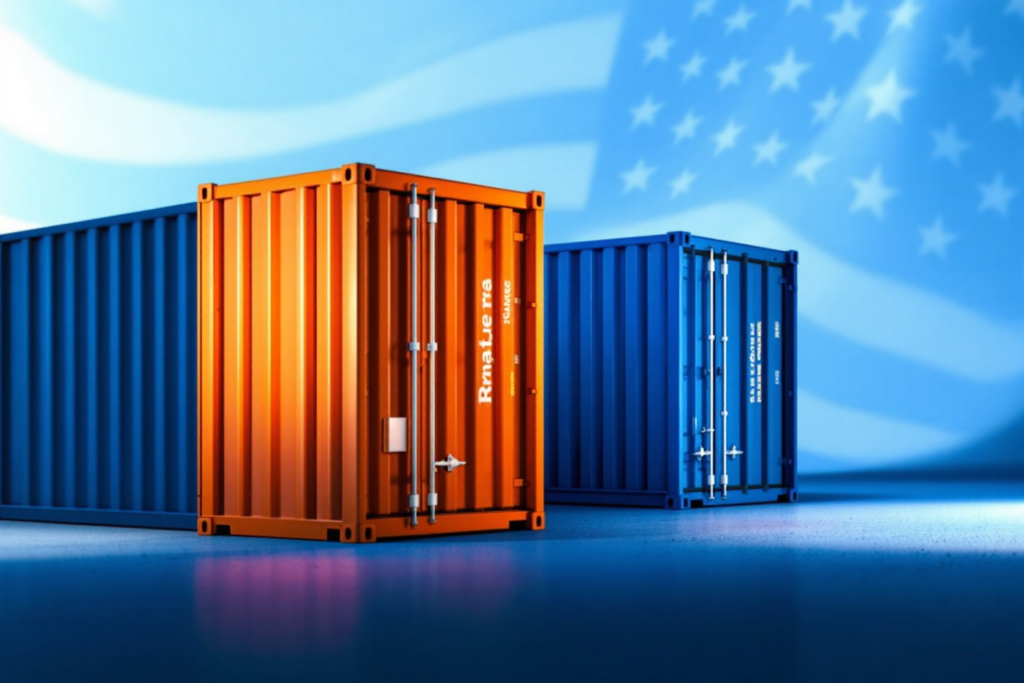When the government raises tariffs on imported goods, it might sound like a move to protect American jobs and industries. And while that may be the intention, the actual consequences are far-reaching—often more complex and costly than they initially appear. From rising consumer prices to strained international relations, higher tariffs can trigger a cascade of economic and political effects.
Let’s walk through what really happens when the U.S. imposes higher tariffs on imports.
📈 1. Prices Go Up for Everyone
One of the most immediate and visible effects of increased tariffs is a rise in prices for everyday goods.
Why?
When importers and retailers face higher taxes on the goods they bring into the country, they often pass those costs on to consumers. This applies to a wide range of products—electronics, furniture, food, clothing, even basic household goods.
📊 The USITC found that importers bore nearly the full cost of these tariffs. In fact, prices increased by about 1% for every 1% increase in tariffs.[1]
Impact
- Increased cost of living for households
- Disproportionate burden on low-income families
- Reduced purchasing power and consumer spending

🏭 2. U.S. Manufacturers Feel the Squeeze, Too
It’s easy to assume that U.S. companies benefit from tariffs. But many U.S. manufacturers rely on imported raw materials or components. When tariffs are imposed on those inputs, production becomes more expensive.
Why?
Even if the final product is “Made in the USA,” the parts might come from abroad. Tariffs make those parts more costly, which eats into profit margins or gets passed along to customers.
📊 Section 232 tariffs led to a $3.5 billion loss in downstream industries in 2021 due to increased material costs.[1]
Impact
- Increased manufacturing costs
- Supply chain reconfigurations
- Potential layoffs or plant closures
🌎 3. Other Countries Fight Back
No one likes being the target of tariffs. So when the U.S. raises them, other countries usually respond with their own.
Why?
This tit-for-tat approach, known as a trade war, can escalate tensions and hurt both economies.
Example: In response to U.S. tariffs on Chinese electronics, China might impose tariffs on American soybeans or airplanes.
Impact
- Reduced exports and revenue for U.S. farmers and manufacturers
- Global supply chain instability
- Diplomatic strain with key allies and trade partners

💸 4. Market Volatility and Investor Uncertainty
Investors are always on edge when tariffs are announced. The uncertainty spooks the markets, and stock prices can tumble, especially in industries that rely heavily on global trade.
Why?
Tariff announcements can trigger sudden stock market declines, especially in sectors like retail, automotive, and tech. Investors become cautious, which can lower confidence and slow economic growth.
Impact
- Stock market fluctuations
- Cautious corporate investment
- Lower business confidence
🔧 5. It Doesn’t Really Fix the Bigger Problems
While tariffs may reduce imports temporarily, they rarely address the root causes of trade imbalances. So while tariffs might feel like a quick fix, they usually don’t change much in the long run.
Why?
Trade deficits are influenced by many factors, including currency values, domestic savings rates, and overall demand. Simply taxing imports doesn’t fix these structural issues.
Impact
- Short-term reduction in imports
- No meaningful change to long-term trade balance
- Risk of repeating the cycle of tariffs and retaliation

These economic disruptions can feel overwhelming—especially for investors.
👉 If you’re wondering how to protect or even grow your investments during a trade war, don’t miss our follow-up post
It offers practical, timely strategies to help you stay ahead of the curve.
🚫 6. Potential Violations of Global Trade Rules
Many tariffs can conflict with World Trade Organization (WTO) rules, especially if they’re deemed punitive or discriminatory.
Why?
Other countries may file formal complaints, leading to legal disputes and penalties.
Impact
- WTO rulings against the U.S.
- Damage to global trade reputation
- Loss of credibility in international forums
👥 7. Consumer and Business Backlash
Rising prices and stressed-out businesses eventually lead to complaints. Voters don’t like paying more for groceries, and companies don’t want to be less competitive.
Why?
Voters dislike paying more for the same goods, and businesses don’t want to lose competitiveness. This can lead to political pressure to reverse tariffs or introduce tax reliefs.
Impact
- Decreased support for trade protectionism
- Lobbying by industry groups
- Political polarization over trade policies

Tariffs Are a Double-Edged Sword
While raising tariffs can offer short-term protection for certain domestic industries, it often does so at a cost—one that consumers, businesses, and the broader economy ultimately pay. The ripple effects can disrupt markets, damage global relations, and raise prices across the board.
So next time you hear about tariffs in the news, remember: it’s not just a headline—it could hit your wallet, your job, or the products you use every day.

